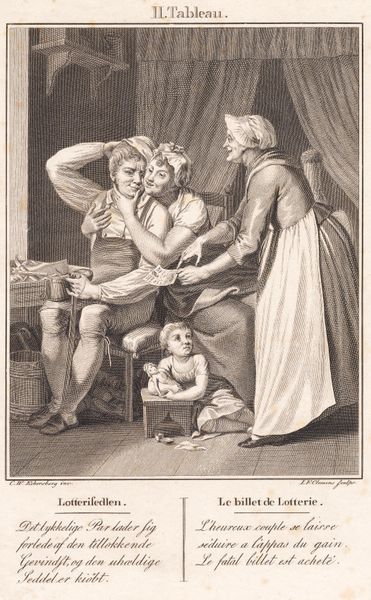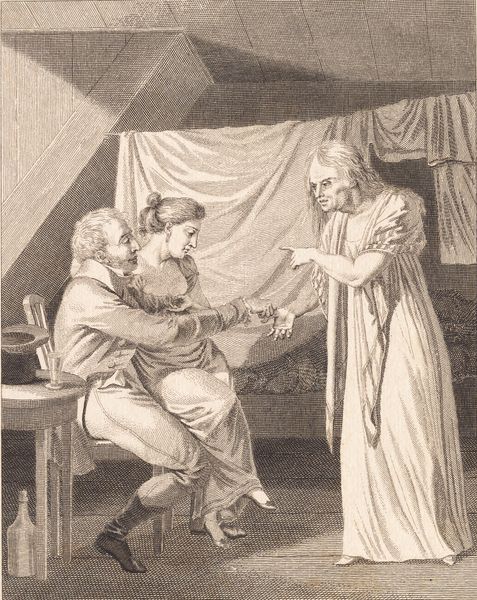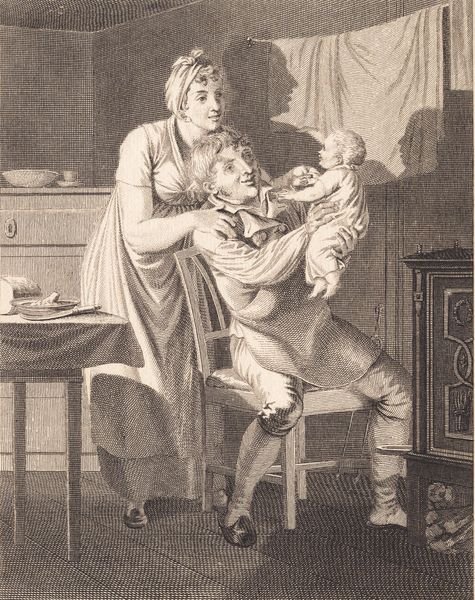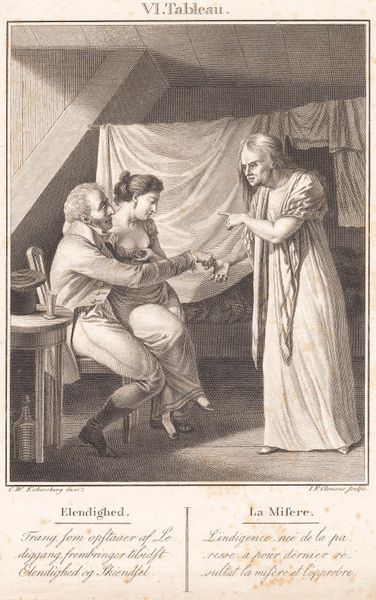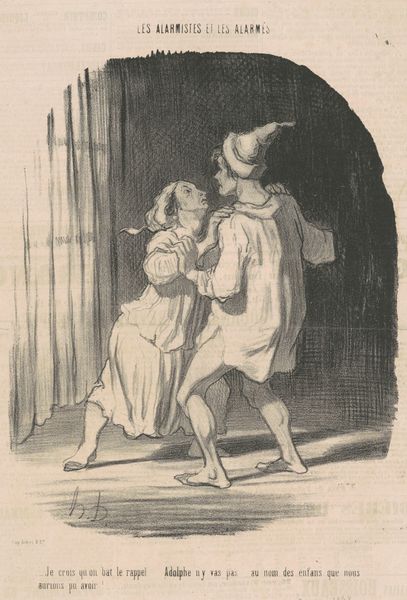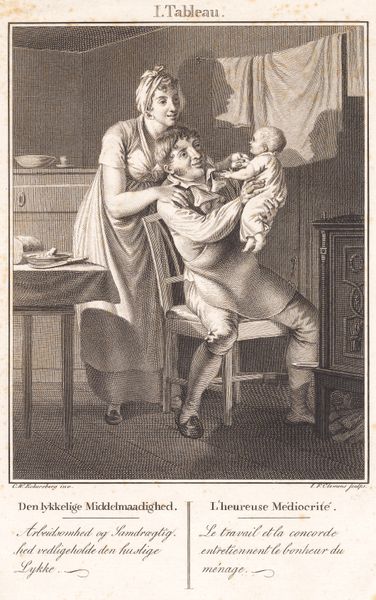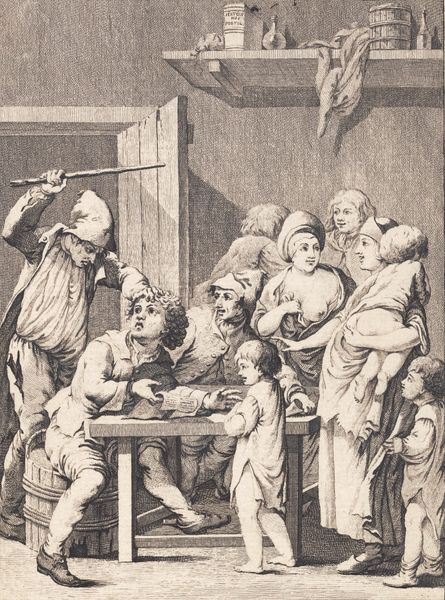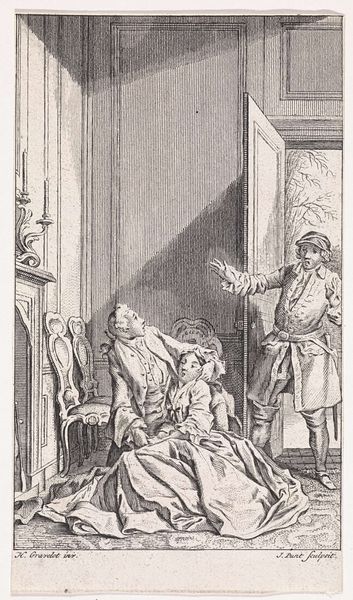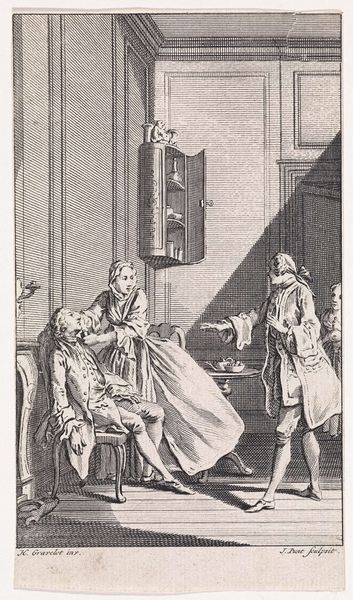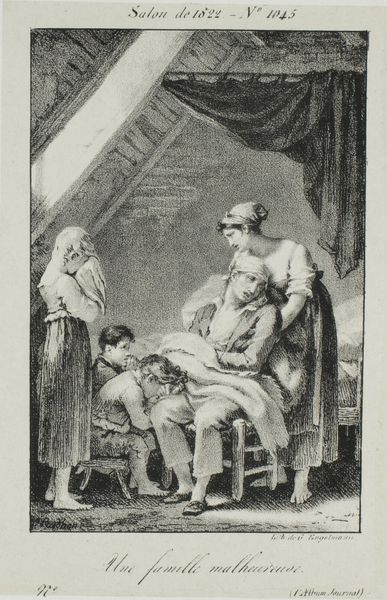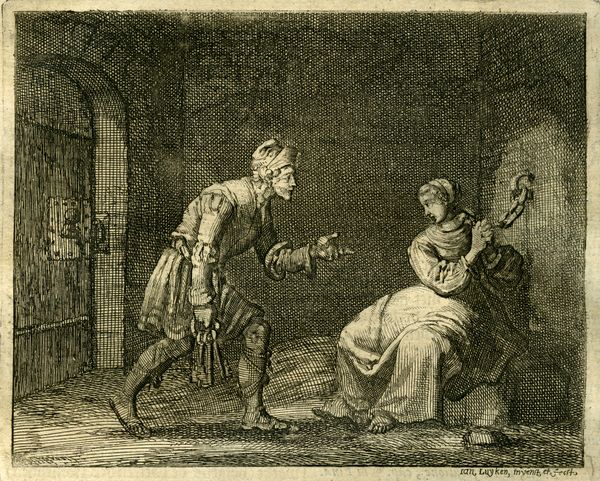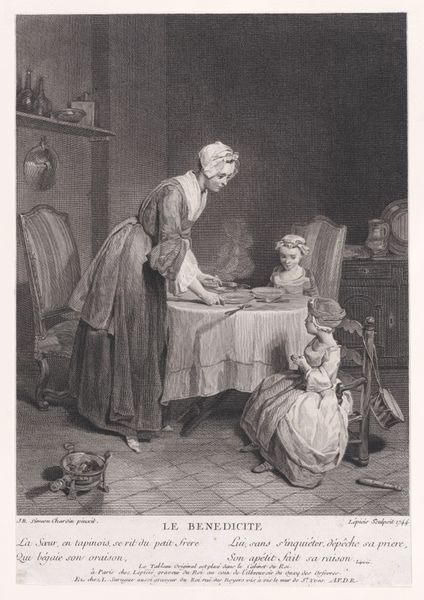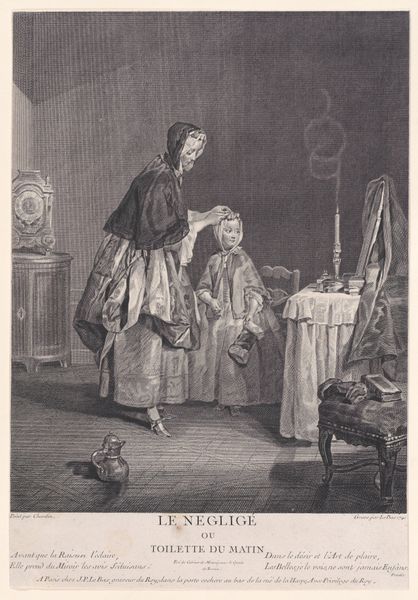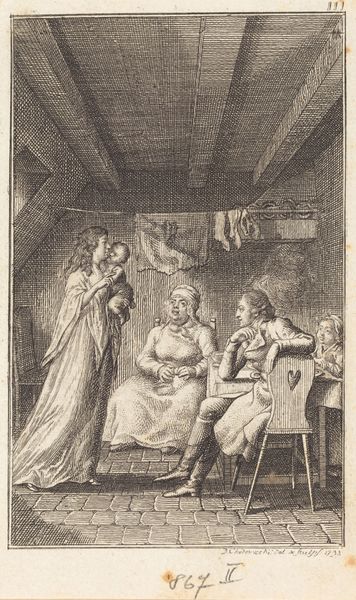
print, engraving
#
narrative-art
# print
#
caricature
#
figuration
#
romanticism
#
genre-painting
#
engraving
Dimensions: 250 mm (height) x 200 mm (width) (bladmaal)
Curator: This is J.F. Clemens’ engraving, "Lotterisedlen," created around 1815 or 1816. It's quite an intimate scene, isn't it? Editor: Intimate, and a little unsettling. There's an almost predatory feel to the woman embracing the younger man. The child looks utterly dejected in the corner. Curator: It’s fascinating to see the detailed work in printmaking from this era. Look at the precise cross-hatching used to create the textures and tonal variations. The materials used in printmaking at the time dictated this careful, linear approach. Editor: I agree, the medium certainly enhances the sharp contrast between light and shadow, amplifying the psychological tension. The woman’s intense expression contrasts sharply with the man's vacant gaze, a stark representation, perhaps, of power dynamics and societal expectations surrounding marriage and financial security in the early 19th century. Curator: Absolutely. The print medium allowed for widespread distribution of such images, and that dissemination raises questions about the accessibility of art and commentary on societal issues for a wider audience at the time. Engravings were a significant part of visual culture, acting almost like newspapers for some. Editor: I see this through a feminist lens. The older woman’s seemingly benevolent act, gifting the lottery ticket, could actually be read as a form of entrapment or control. And note the doll left on the floor in the foreground, discarded almost. Does that speak to the transient nature of female success as merely something one can hold and then dispose of at whim? Curator: Or might the doll simply represent childhood innocence lost amidst the pursuit of fortune? The title suggests that the lottery ticket itself—a symbol of chance and potential upward mobility—is central. Were the production and consumption of these lottery tickets feeding the economy? The raw materials, the paper itself: where did these things come from and who benefitted most? Editor: That's compelling, the lottery as a commodity in itself! But it also invites questions about the socioeconomic anxieties of the period and the accessibility of wealth through a mechanism predicated on pure luck. Think about how systems of inequality impact access, opportunity, even hope itself. Curator: Indeed. And in exploring both the physical production of Clemens' print, alongside the hopes it conveys, and reflects, this engraving becomes such a complex window into that period. Editor: Ultimately, this work is more than a snapshot. It acts as an unsettling mirror, encouraging us to interrogate assumptions around gender, class, and the seductive promise of instant wealth then, and, crucially, now.
Comments
No comments
Be the first to comment and join the conversation on the ultimate creative platform.
